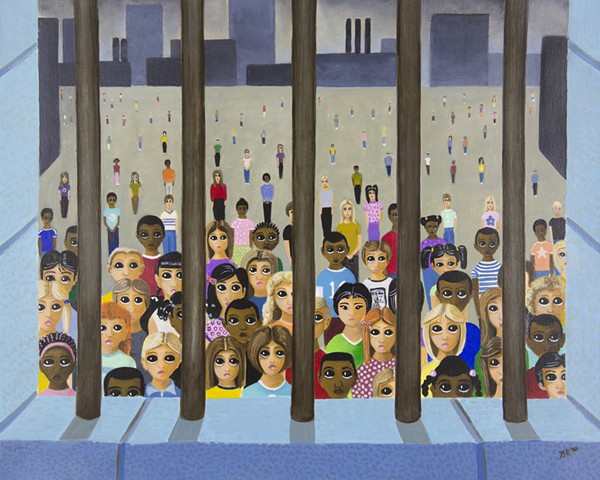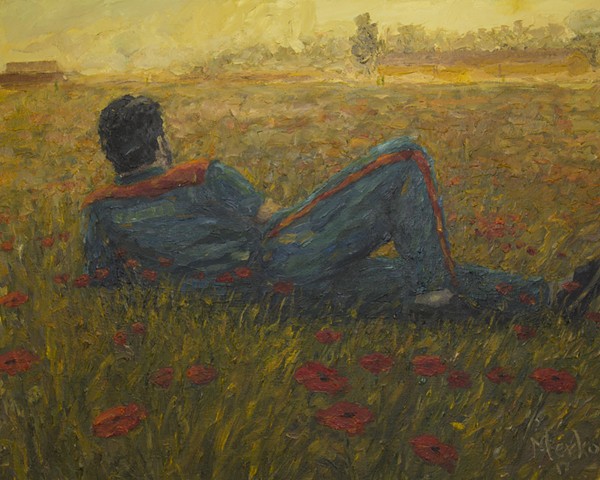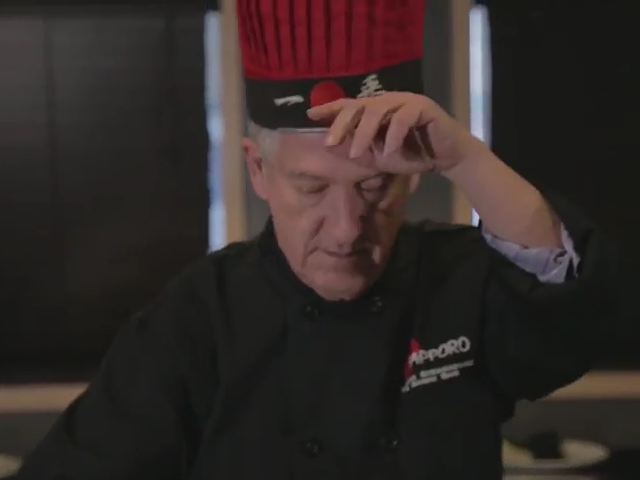Much can be done with a sheet of state-issued paper and a no. 2 pencil. Proof of this can be seen in the most unlikely of creative spaces: Michigan prisons.
The Annual Exhibition of Art by Michigan Prisoners looks to humanize prisoners. In its 23rd year, the exhibition will be held in the Duderstadt Center Gallery on University of Michigan-Ann Arbor’s North Campus from March 21 to April 4 and remains one of the largest exhibitions of art by incarcerated individuals in the world.
Retired U-M professor, artist, and senior curator Janie Paul started the annual exhibition in 1996 with her husband, both of whom were already working closely with the Prison Creative Arts Project and prisoners themselves.
"Once we did the first year we were hooked. What we found was the work allowed artists to have a bridge into the world. Art is a basic human need. It's something all people can do. And people who have never done it before can do incredible things. You see the power of the human spirit," Paul explains.
"We want to show the public that there are more sides to people than the worst things they’ve done," she tells Metro Times.
Each year PCAP posts a call for submissions in all of the Michigan state adult prisons and individual letters are sent to every artist who had been featured or submitted previous years. In the fall, Paul is joined by a fellow curator and a handful of volunteers to assess the work throughout 28 adult prisons across the state of Michigan. This year 1,800 works were submitted and 658 were selected for the exhibit.
In anticipation of the visit, the artists prepare their work, often times in a gym or classroom setting. Paul describes the first phase of the selection process as "mingling" as she and the volunteers discuss the work with the artists. This usually takes up to two hours.
"This is an extremely important time for artists, it's important for them to have a normal interaction."
During phase two, the artists leave the room and the final selections are made among the team. When the artists return, Paul takes an opportunity to explain what was selected and why. The feedback, Paul says, is crucial.
"They are excited because we are taking them seriously," she says. "We can turn someone down and give suggestions and often times they submit the following year."
As far as the criteria, Paul says skill levels vary but their selection process has little to do with technical skill. What they are looking for is a sense of commitment.
"What we are looking for is something that feels like we’re seeing the artist," she says. "Most shows are not curated this way. Sometimes we hear a story about an artist that makes us want to put their work in the show."
When asked if there was a discernible common narrative in the work over the years, Paul says there is not a single commonality, but in fact, there are many. Mostly, though, a lot of the work is unlike anything she has ever seen.
From landscapes, portraits, and wildlife to political statements, science fiction, and tattoo art, the subjects and mediums vary. Paul has also seen incredible 3D works and describes soap sculptures and ships built from toothpicks and found materials. This year, there's an elephant head made from 5,000 brightly colored beads. She says she knows it's 5,000 because the artist made sure to count.
In 2017, the exhibition amassed $20,000 in sales, all of which was given to the prisoners. PCAP retains none of the profits. Exhibition aside, art culture has shifted within the prison system since the project's origin. Art has become an economic factor and remains one of the only ways to make money in prison. From greeting cards to commissioned portraiture, artists often sell to fellow inmates and staff. Though the artists are responsible for bartering or purchasing their own supplies, often through approved vendors, selling the art provides value that extends beyond a dollar amount.
"I’ve learned so much from these artists, in some ways, more than I have from my academic environment. People in prison live close to the bone. They are either growing or deteriorating," Paul explains. "The commitments they make are serious. When they make art it matters and that sense of mattering is a great gift."
23rd Annual Exhibition of Art by Michigan Prisoners will take place from March 21 through April 4 at the Duderstadt Center Gallery on University of Michigan-Ann Arbor’s North Campus at 2281 Bonisteel Blvd., Ann Arbor; 734-763-3266; dc.umich.edu; Event is free and open to the public.
Get our top picks for the best events in Detroit every Thursday morning. Sign up for our events newsletter.






